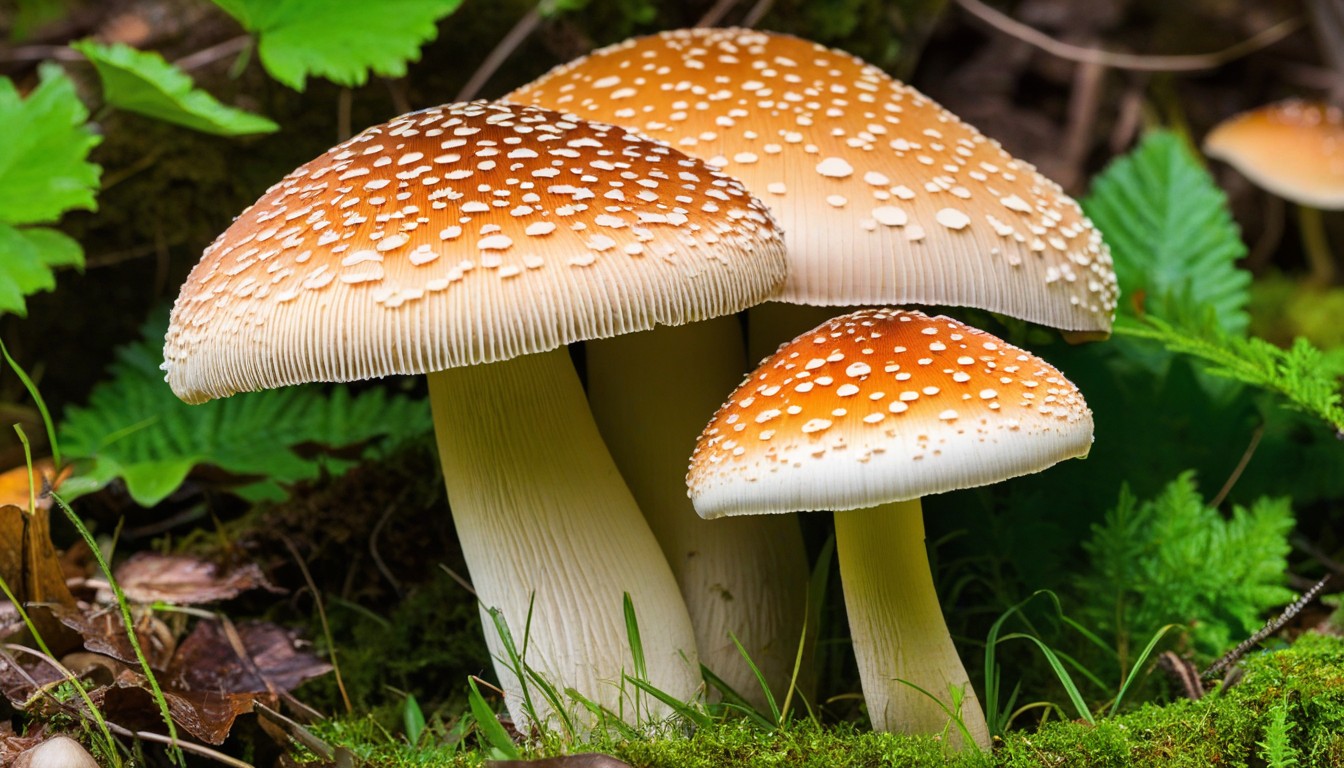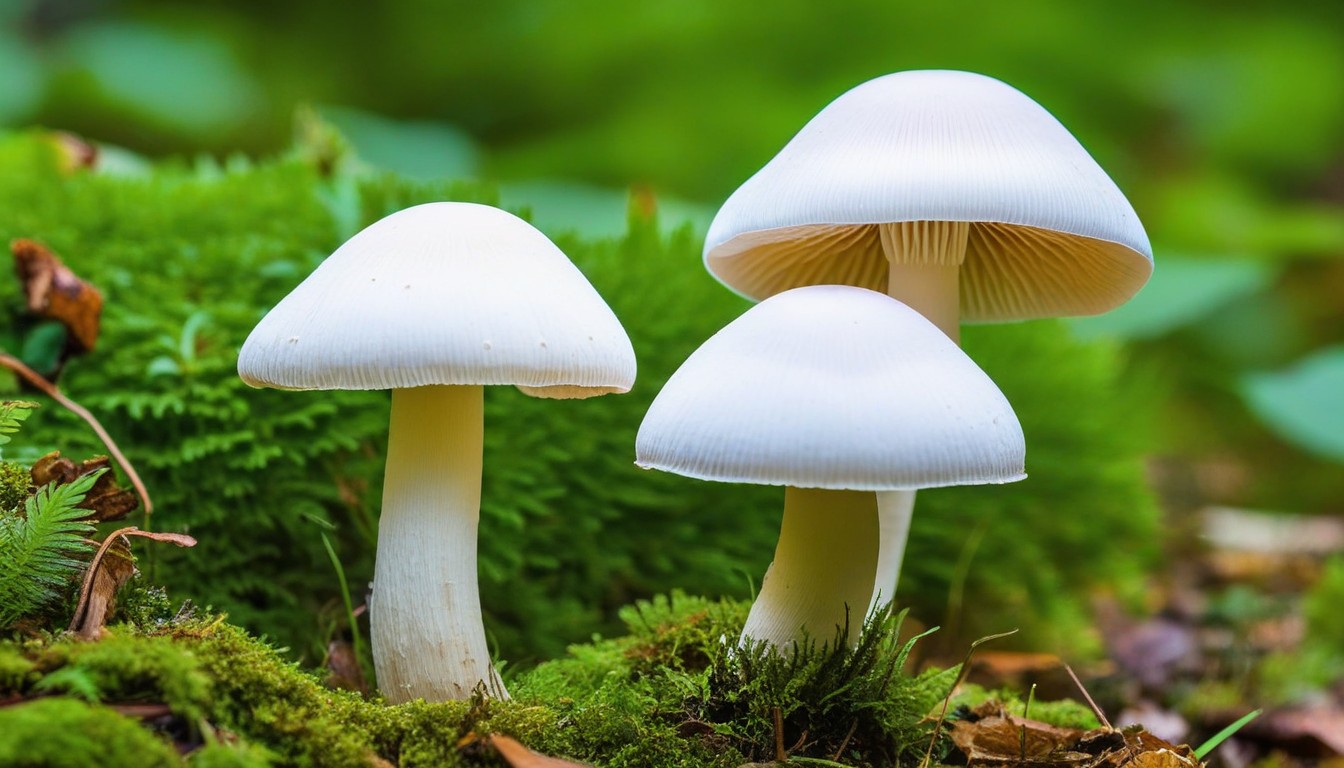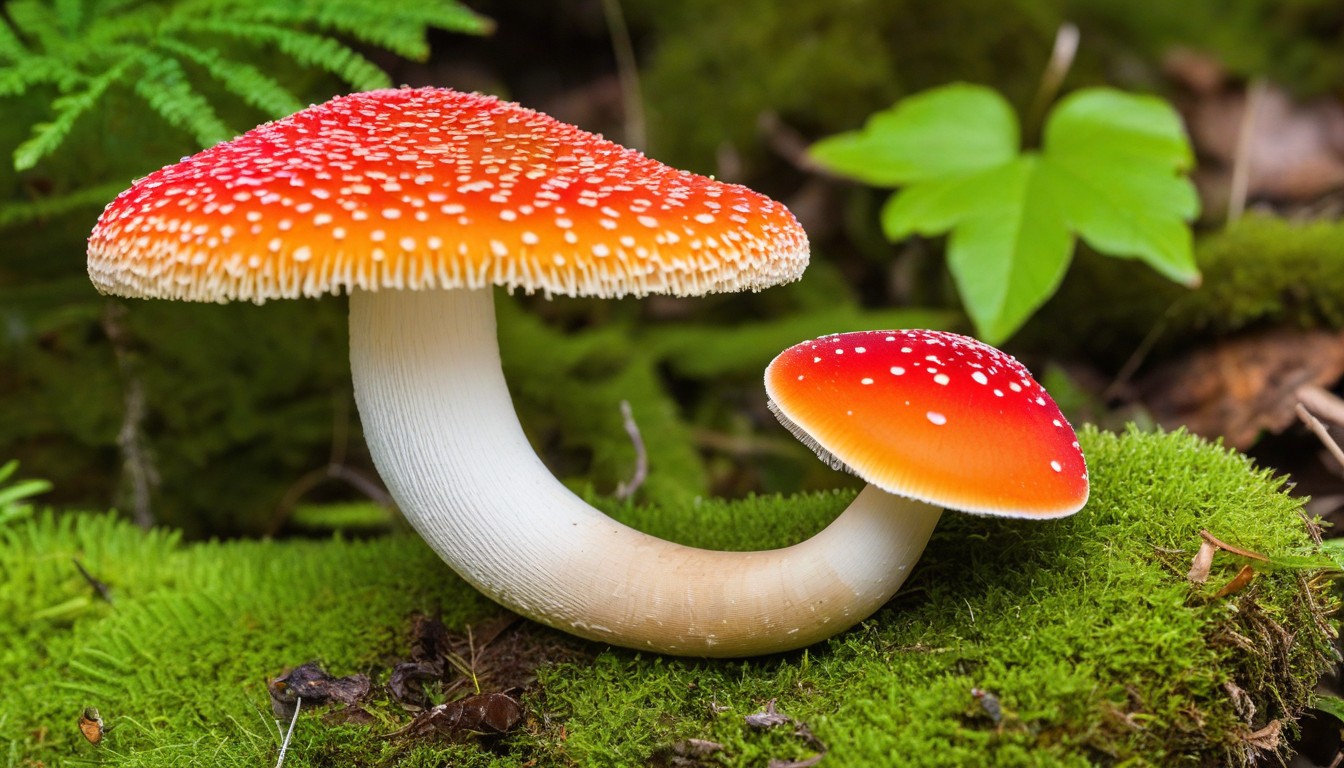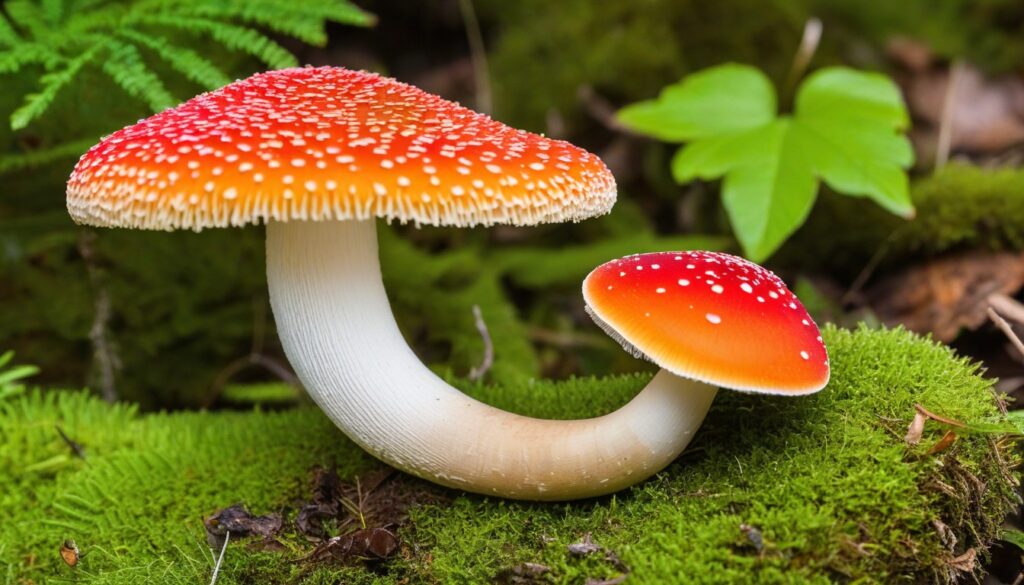If you’re a fan of mushrooms, why not try your hand at growing them at home? With just a bit of knowledge and some basic equipment, you can cultivate your own delicious and nutritious mushrooms right in the comfort of your own home. And the best part? You don’t need any prior gardening experience to get started!
In this comprehensive guide, we’ll walk you through everything you need to know about growing store bought mushrooms at home. From choosing the right mushroom variety to creating the ideal growing environment and troubleshooting common issues, we’ve got you covered. Whether you’re looking for a fun new hobby or a way to save money on store-bought mushrooms, you’re in the right place.
Key Takeaways
- Home mushroom cultivation is easy and accessible, even if you don’t have prior gardening experience
- Store bought mushrooms can be grown successfully at home with the right knowledge and equipment
- Choosing the right mushroom variety and creating the ideal growing environment are crucial for successful cultivation
- Maintaining the ideal growing conditions and proper harvesting techniques are key to maximizing mushroom growth and flavor
- With a bit of practice, you can even expand your skills to more advanced techniques and exotic mushroom species
Why Grow Your Own Mushrooms?
When it comes to enjoying mushrooms, it’s hard to beat the earthy and complex flavors of homegrown varieties. But there are many more benefits to growing your own mushrooms beyond just taste. Here are some of the top reasons to give home mushroom cultivation a try:
- Access to a wider variety of mushroom species: While store bought mushrooms are often limited to popular varieties like button and portobello, home growers have access to a much wider range of species to experiment with.
- Freshness and quality control: When you grow your own mushrooms, you can ensure that they are picked at the peak of freshness and quality. No more disappointing, slimy mushrooms from the grocery store!
- Cost savings: Depending on your setup and the types of mushrooms you grow, cultivating your own can save you money in the long run compared to buying them at the store.
- Satisfaction of cultivating your own food: There’s nothing quite like the feeling of growing your own food and sharing it with others. Home mushroom cultivation is a fun and rewarding way to connect with nature and learn new skills.
With so many benefits to growing your own mushrooms, it’s no wonder that more and more people are taking up this hobby. Keep reading to learn how you can get started with easy and beginner-friendly home mushroom cultivation.
Choosing the Right Mushroom Variety
When it comes to growing mushrooms at home, it’s essential to choose the right mushroom species based on your experience level and personal preferences. Some mushroom species are more beginner-friendly compared to others.
For novice growers, we recommend starting with oyster mushrooms, which are easy to cultivate and have a short growth cycle. Button mushrooms and shiitake mushrooms are also popular options for beginners.
If you’re an experienced grower looking to explore more unique flavors, you might consider growing lion’s mane, morel, or chanterelle mushrooms.
Factors to Consider
When selecting a mushroom variety, consider your growing environment and resources. Some mushroom species require specific substrate and growing conditions, such as temperature and humidity.
Additionally, think about your personal preferences and intended use for the mushrooms. Would you prefer a milder or stronger flavor? Are you hoping to add your homegrown mushrooms to specific dishes or cuisines?
Preparing the Growing Environment

Creating the ideal mushroom growing environment is a crucial step in the cultivation process. Whether you’re working with a dedicated grow room or a smaller space, it’s important to consider various factors to support successful mushroom growth.
Setting up a Grow Room
If you’re fortunate enough to have a dedicated space for mushroom cultivation, there are several key considerations to keep in mind when setting it up.
- Maintain proper temperature: Mushrooms thrive in temperatures between 60 and 70 degrees Fahrenheit. Use a thermometer to monitor the temperature and consider installing a space heater if the temperature falls below the ideal range.
- Regulate humidity: Mushrooms require a humid environment to grow properly. Aim for a humidity level between 80-90% and consider using a humidifier to maintain consistent moisture levels.
- Provide good ventilation: Mushrooms need fresh air to grow, so it’s important to ensure proper ventilation in your grow room. A fan or air exchange system can help circulate air and prevent stagnant pockets from forming.
- Ensure proper lighting: While mushrooms don’t need light to grow, they do require some exposure to light to develop nutritional properties. A simple fluorescent bulb or LED light can provide the necessary illumination.
Creating a Mushroom Growing Environment in Limited Space
If you don’t have a dedicated grow room, don’t worry! You can still create a suitable environment for growing mushrooms in a smaller space, such as a closet or basement corner.
- Select a suitable container: Choose a container that will fit in your space and can be covered to regulate humidity. A plastic container or large Tupperware are both good options.
- Maintain temperature: Keep the container in a consistently warm place, such as a closet or basement, and use a thermometer to monitor the temperature. You may need to use a space heater to keep the temperature in the ideal range.
- Regulate humidity: Use a spray bottle or humidifier to maintain a consistently high humidity level inside the container.
- Provide air exchange: Open the container daily to allow fresh air to circulate, and consider using a small fan to improve ventilation.
- Ensure proper lighting: As with a larger grow room, you don’t need much light to grow mushrooms. A simple fluorescent bulb or LED light can provide the necessary illumination.
Understanding Mushroom Growing Containers and Substrate Options
Choosing the right container and substrate is crucial for the success of your home mushroom cultivation project. Here are some things to consider:
Mushroom Growing Containers
There are several container options to choose from when growing mushrooms at home:
|
Container Type |
Pros |
Cons |
|---|---|---|
|
Trays |
Easy to stack and store |
May dry out quickly and require frequent misting |
|
Bags |
Can hold moisture well |
May require additional materials to support the bags |
|
Jars |
Perfect for small spaces |
May not be suitable for larger mushroom varieties |
Substrate Options
The type of substrate you choose will depend on the mushroom species you’re cultivating. Here are some common substrates:
- Compost
- Sawdust
- Straw
- Coffee grounds
Each substrate has its own set of pros and cons, and the amount of time and effort required to prepare them can also vary. For example, sawdust requires sterilization before use, while straw can be pasteurized. Do your research and choose a substrate that works best for you and your chosen mushroom variety.
Spawning and Inoculation

Now that you have selected your preferred mushroom species and prepared your growing environment, it’s time to move on to the spawning and inoculation process.
Mushroom spawn refers to the vegetative growth or mycelium of mushrooms. For successful home mushroom cultivation, it’s crucial to use high-quality spawn. You can purchase spawn online or from a local supplier.
The next step is to prepare your inoculating substrate. Depending on your chosen mushroom species, this may involve sterilizing or pasteurizing the substrate to remove any competing microbes. Follow the instructions carefully for your specific substrate and sterilization method.
Once your substrate is ready, you’re ready to inoculate it with mushroom spawn. Here are the basic steps:
- Clean your work area and tools with alcohol or a sterilizing agent
- Open your spawn package and break it apart into small pieces
- Distribute the spawn evenly throughout your prepared substrate
- Mix the spawn and substrate together using a sterile spoon or gloved hands
- Place your inoculated substrate into your chosen container and cover with a lid or breathable material
Your inoculated substrate now needs time to incubate. This process allows the mycelium to colonize the substrate and establish a network of nutrient-absorbing tendrils. Depending on your mushroom species and growing conditions, incubation can take anywhere from a few days to several weeks.
During incubation, it’s important to maintain the ideal growing conditions we discussed previously. This includes regulating temperature, humidity, and air exchange. Check on your substrate regularly and make adjustments as needed.
Once you see visible signs of mycelium growth throughout the substrate, you’re ready to move on to the fruiting stage. This is where your mushrooms will begin to form and mature.
But that’s a topic for the next section. For now, enjoy the excitement of watching your mushroom spawn come to life in your prepared substrate.
Maintaining the Ideal Growing Conditions
Now that your mushrooms are growing, it’s important to maintain the ideal growing conditions to ensure healthy and abundant growth. Here are some mushroom cultivation tips to follow:
1. Regulate Humidity
Mushrooms thrive in humid environments, so it’s essential to maintain proper humidity levels. Aim for a humidity level between 75-85%. If the humidity is too low, the mushrooms will dry out and stop growing. On the other hand, if the humidity is too high, it can lead to mold growth. You can maintain humidity by misting the growing area regularly or using a humidifier.
2. Control Temperature
Temperature is another important factor in mushroom cultivation. The ideal temperature range is between 60-75°F. If the temperature is too low, the mushrooms will grow slowly, and if it’s too high, it can lead to heat stress. Make sure to monitor the temperature regularly and adjust as needed. You can also use a heating pad or space heater to regulate the temperature.
3. Proper Ventilation
Adequate ventilation is crucial for maintaining optimal growing conditions. Fresh air is needed to circulate and provide oxygen to the mushrooms. Without proper ventilation, the growing environment can become stagnant, leading to mold and mildew growth. Use a fan to circulate air and ensure proper ventilation.
4. Regular Monitoring
Keep a close eye on your growing environment and monitor the humidity, temperature, and ventilation regularly. Check for any signs of mold or pests and address any issues immediately. Regular monitoring will help you catch any problems early and prevent them from spreading.
By following these mushroom cultivation tips, you’ll be able to maintain the ideal growing conditions for your store bought mushrooms and enjoy a bountiful harvest.
Harvesting and Caring for Mushrooms

Harvesting your mushrooms is an exciting and satisfying step in the home cultivation process. It’s important to use proper harvesting techniques to ensure maximum freshness and flavor. Here are a few tips to help you harvest your mushrooms:
- Wait until the caps have fully opened before harvesting.
- Use a sharp knife or scissors to cut the stem at the base.
- Avoid pulling the mushroom out of the substrate, as this can damage the mycelium.
After harvesting your mushrooms, it’s important to store them properly to maintain their quality and freshness. Here are some tips for storing your mushrooms:
- Store your mushrooms in a paper bag or wrapped in a paper towel to allow for air circulation.
- Avoid storing mushrooms in plastic bags, as this can trap moisture and cause them to spoil.
- Store your mushrooms in the refrigerator for up to a week.
- You can also freeze your mushrooms for longer storage, but be sure to blanch them first to preserve their texture.
Troubleshooting Common Mushroom Growing Issues
Even experienced growers encounter issues when cultivating mushrooms at home. Here are some common problems and effective troubleshooting tips to help you overcome them:
- Poor Mushroom Growth
If your mushrooms are growing poorly, it may be due to inadequate airflow, improper temperature or humidity levels, or insufficient light exposure. Check your growing environment and adjust as necessary. - Mushroom Contamination
Contamination by bacteria, mold, or other fungi can ruin your mushroom crop. To prevent contamination, maintain a sterile growing environment, use high-quality spawn and substrate, and avoid introducing contaminants through unclean equipment or materials. - Overwatering or Underwatering
Mushrooms require a delicate balance of moisture, and over or under watering can be detrimental to their growth. Be sure to monitor moisture levels and adjust watering accordingly. - Mushroom Bruising
Handling mushrooms roughly or subjecting them to rapid temperature changes can cause bruising, which can result in discolored or damaged mushrooms. Handle mushrooms gently and consider using a temperature-controlled chamber for harvesting. - Insect Infestations
Insects can wreak havoc on your mushroom crop, damaging fruiting bodies and introducing harmful bacteria or fungi. Regularly inspect your growing environment and take steps to control insect populations through natural methods such as introducing beneficial predators or using organic pest controls.
By being aware of these potential issues and taking proactive steps to address them, you’ll be well on your way to successful home mushroom cultivation.
Expanding Your Mushroom Cultivation Skills

Congratulations! If you’ve successfully grown your own store bought mushrooms, you’ve already taken your first steps into the fascinating world of mushroom cultivation. But did you know that there are many other varieties of mushrooms that you can cultivate at home? Let’s explore the exciting possibilities of advanced mushroom cultivation and exotic mushroom species.
Advanced Mushroom Cultivation
Advanced mushroom cultivation techniques offer many benefits to the experienced mushroom grower. By mastering advanced methods, you can increase your yield, grow more complex mushroom varieties, and even experiment with new growing techniques.
Some advanced mushroom cultivation techniques include:
- Spawning to bulk substrates
- Using liquid culture to inoculate substrates
- Creating your own culture collections
As you explore advanced techniques, you’ll discover new ways to manipulate the conditions and growing environment of your mushrooms, allowing you to grow even more diverse and unique varieties.
Exotic Mushroom Species
Once you’ve mastered the basics of mushroom cultivation, you may want to try your hand at growing exotic mushroom species. These unique mushrooms offer a range of textures, flavors, and health benefits that can’t be found in store-bought varieties.
Some exotic mushroom species that you may want to consider growing include:
|
Mushroom Species |
Flavor Profile |
|---|---|
|
Shiitake |
Meaty and earthy |
|
Oyster |
Mild and slightly sweet |
|
Maitake |
Rich and nutty |
|
Lion’s Mane |
Sweet and seafood-like |
Remember, when cultivating exotic mushroom species, it’s essential to research their specific growing conditions and requirements. With proper care and attention, you’ll be rewarded with fresh and delicious mushrooms that can’t be found in stores.
As you continue to explore the world of mushroom cultivation, remember to have fun, stay curious, and keep experimenting with new techniques and varieties. Who knows what new and exciting mushroom species you’ll discover along the way?
Conclusion
We hope this guide has inspired you to try your hand at growing store bought mushrooms at home. With just a few steps and some patience, you can enjoy the satisfaction and deliciousness of your own homegrown mushrooms.
Remember to Enjoy the Process
While the end result of a bountiful mushroom harvest is certainly rewarding, don’t forget to enjoy the process of cultivation. Take the time to marvel at the tiny mushroom caps as they start to emerge, and revel in the unique aroma that fills your growing space.
Share Your Successes (and Challenges)
As you embark on your mushroom growing journey, don’t be afraid to reach out to other growers for advice or to share your successes and challenges. There are many online communities and forums dedicated to mushroom cultivation where you can connect with like-minded individuals and gain valuable insights.
Keep Learning and Experimenting
Even after you’ve mastered the basics of growing store bought mushrooms, there’s always more to learn and new techniques to try. Consider experimenting with different growing mediums, experimenting with exotic mushroom species or even developing your own mushroom growing techniques. The possibilities are endless!
Happy mushroom growing!
FAQ
What are the benefits of growing your own mushrooms?
Growing your own mushrooms allows you to enjoy the satisfaction of cultivating your own food, save money, and have access to a wider variety of mushroom species.
How do I choose the right mushroom variety for home cultivation?
The right mushroom variety depends on your skill level, available space, and personal preferences. We’ll guide you through the selection process to find the perfect mushroom species for you.
How do I create the ideal growing environment for mushrooms?
Factors such as temperature, humidity, lighting, and ventilation are crucial for successful mushroom cultivation. We’ll provide tips on creating the perfect growing environment, whether you have a dedicated grow room or limited space.
What types of containers and substrates should I use for growing mushrooms?
Choosing the right containers and substrates is important for supporting mushroom growth. We’ll discuss different container options, such as trays, bags, and jars, as well as the best substrates to use.
How do I spawn and inoculate my chosen mushroom variety?
Learn the art of spawning and inoculating by obtaining high-quality mushroom spawn and inoculating it into your prepared substrate. We’ll guide you through the process step-by-step.
How do I maintain the ideal growing conditions for mushrooms?
Once your mushrooms start growing, it’s crucial to regulate humidity, temperature, and airflow to promote healthy growth. We’ll provide expert tips on maintaining the ideal growing conditions.
How do I harvest and care for mushrooms?
When it’s time to harvest your mushrooms, we’ll walk you through proper techniques to ensure maximum freshness and flavor. We’ll also provide guidance on how to store and preserve your mushrooms.
What do I do if I encounter issues while growing mushrooms?
Common issues can arise during mushroom cultivation, but we’ve got you covered. We’ll address common problems and provide troubleshooting tips to help you overcome challenges.
What are the next steps for advanced mushroom cultivation?
Once you’ve successfully grown store bought mushrooms, you may want to explore advanced techniques and exotic mushroom species. We’ll introduce you to the exciting world of advanced mushroom cultivation and provide resources for further learning.

